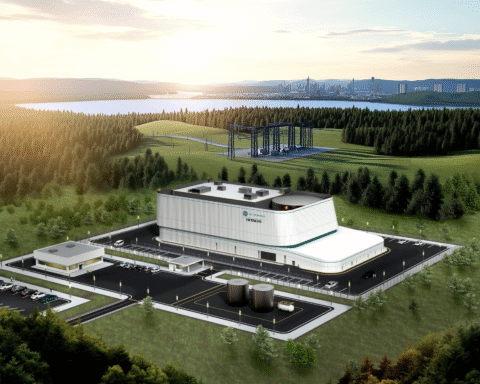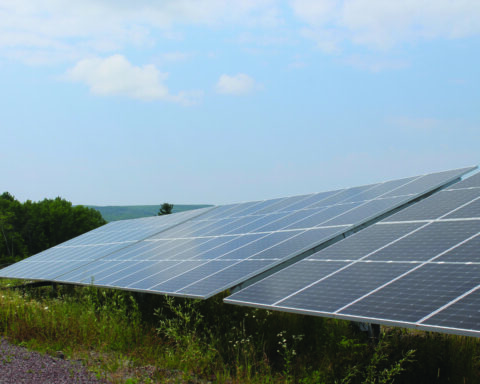Every other day, it seems, an oil and gas industry supporter appears on my LinkedIn or X (formerly Twitter) feeds, arguing that Canada needs to ramp up the production and export of liquefied natural gas (LNG). While their interest is clearly economic, many proponents wrap their arguments in dubious claims about Canadian LNG contributing to the global fight to reduce greenhouse gas emissions.
Driving out of Victoria on my way to the airport this spring, a green billboard grabbed my attention: “BC LNGF will reduce global emissions,” the sign declared. Really?
The climate-change argument is central to the LNG debate in Canada.
It is impossible to justify expanding LNG trade if the resulting production and consumption of natural gas would be inconsistent with efforts to mitigate the growing climate crisis. Especially when producers are looking for subsidies and want to benefit from financial instruments that are being offered to projects that contribute to our climate goals.
We’re assured by industry and its defenders that upping Canadian gas exports would displace the use of coal or more emissions-intensive LNG in Asia, thereby lowering global GHGs even if the resulting emissions are higher here in Canada.
They argue that this country could actually take credit for some of those Asian GHG reductions under Article 6 of the 2015 Paris climate treaty, which allows for bilateral emissions trading.
Essentially, Article 6 has become a green fig leaf to greenwash LNG exports.
The Paris Agreement article is a complex, highly conditional mechanism that, in theory, could provide a measure of environmental credibility to the sale of gas to countries that currently rely heavily on coal for their power and heat. That’s the theory; in reality, it’s highly improbable that LNG exports would qualify.
To use Article 6, governments in buyer and seller countries would have to agree on a wide-ranging climate strategy that lays out precisely how the specific quantities of additional gas production, liquefaction, transportation and consumption would contribute to lower overall emissions in the two countries combined, says a recent Public Policy Forum paper authored by a trio of Canadian experts in climate-change trade.
The Missing Article paper was released last November and is a key touchstone in the growing debate over federal LNG policy. It was written by veteran Toronto lawyer Lisa DeMarco of Resilient LLP; Katie Sullivan, managing partner of the IETA, an emissions-trading organization; and Steve MacDonald, a former chief executive of Emissions Reduction Alberta (ERA), an Alberta-based not-for-profit corporation with a mandate to reduce GHGs.
The climate-change argument is central to the LNG debate in Canada.
The paper provides an excellent guide to Article 6 and a description and analysis of the broad array of opportunities in which Canada could take advantage of it. The market-based approach provides the kind of economic advantage that is at the heart of cap-and-trade systems, as well as offset strategies available under industrial carbon pricing.
The Public Policy Forum (PPF), a business-based, non-profit think tank, has itself called for expanding LNG exports, arguing that such an approach would be a climate-friendly strategy. In the introduction of The Missing Article, PPF president Edward Greenspan still holds out the promise of Article 6 to provide environmental credibility for enhanced gas trade.
However, in the body of the paper, the trio of experts conclude that LNG trade would face enormous challenges in order to generate the “internationally transferred mitigation outcomes” (ITMOs) that are at the heart of Article 6. “Article 6 is not, as is sometimes asserted in Canada, a panacea,” they write.
For one thing, both buyer and seller governments must be in compliance with core Paris Agreement obligations to participate in the Article 6 mechanism. As well, the parties must provide clear assurances that any emission reductions would be additional to those that would be achieved without the Article 6 trade.
Environmental groups in South Korea and Japan have warned that the flood of LNG supply from the Middle East, the United States, Australia and Canada aimed for Asia could squeeze out investment in zero-emission renewable energy.
And there must be no “leakage” of unreported emissions. That’s a particularly difficult challenge for a system that currently experiences considerable methane leakage in upstream gas production, as well as from the pipelines, large liquefaction plants and ocean-crossing tanker ships. “Liquified natural gas (LNG) exports from Canada, despite the relatively low carbon intensity of our gas, will be challenged to meet the criteria of additionally and ‘leakage avoidance’ . . . unless they are part of more complex and comprehensive arrangements,” The Missing Article says.
Essentially, Article 6 could be used for LNG trade only with the kind of government-centred energy and environmental planning that is anathema to the oil and gas corporations and conservative politicians in Alberta and at the federal level. It’s no surprise that Alberta Premier Danielle Smith is calling for a renegotiation of its rules, despite the fact it took seven years of contentious international negotiations to complete the current rulebook.
Industry has invested billions of dollars in vast reserves of gas in Western Canada, especially in the Montney fields in northwestern Alberta and northeastern British Columbia. Expanded LNG exports from B.C. would provide a key market to realize returns on that investment.
Given the enormous challenges of Article 6, the industry is likely to walk away from the Paris Agreement mechanism and pursue LNG exports with less credible claims about environmental benefits.
Currently, there are several West Coast LNG projects that have received environmental approvals and are awaiting investment decisions. They include LNG Canada’s phase 2, Cedar LNG and Woodfibre LNG.
Despite misgivings raised in The Missing Article, a PPF paper released in January argued that Canada can “have it all – LNG, a green economy and reconciliation” with Indigenous Peoples. To make it happen, industry needs subsidies for clean electricity and access to preferential tax incentives and lending under Canada’s clean energy policies to undertake the billion-dollar investments in new LNG plants, says the paper from PPF’s Energy Future Forum.
“It needs to be a strict molecule-by-molecule accounting.”
– Lisa DeMarco, lawyer with Resilient LLP
Rather than a strict accounting of emission reductions, the How to Have It All paper suggests that LNG producers would merely need to satisfy a “balance of probabilities” test that their exports would reduce overall global emissions. However, that approach would not satisfy Article 6 requirements, Missing Article author DeMarco tells Corporate Knights: “It needs to be a strict molecule-by-molecule accounting.”
The burden of proof on LNG sustainability must lie with the would-be exporters who are demanding a range of preferential government policies in order to commit to the massive investment required.
Clearly, we need more than greenwashed assurances from an industry whose record includes thousands of orphaned oil and gas wells across Western Canada and enormous tailings ponds in the oil sands that will never be reclaimed.
We risk seeing billions of dollars in investment – some of it backed by the federal government and undertaken by First Nations – going into an unsustainable fossil fuel business that fails to deliver its touted benefits.
Its owners could be left with dead-end investments as the countries accelerate the transition off fossil fuels to avert the increasingly costly impacts of climate change.







